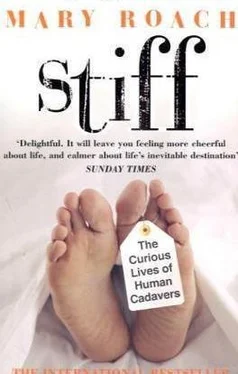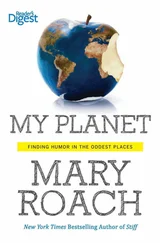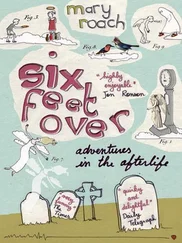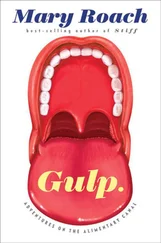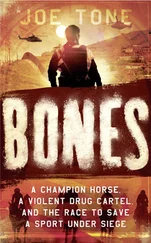He also dissected a good sum of animals, preferably apes, which he believed to be anatomically identical to humans, especially, he maintained, if the ape had a round face. The great Renaissance anatomist Vesalius later pointed out that there are two hundred anatomical differences between apes and humans in skeletal structure alone. (Whatever Galen’s shortcomings as a comparative anatomist, the man is to be respected for his ingenuity, for procuring apes in ancient Rome can’t have been easy.) He got a lot right, it’s just that he also got a fair amount wrong. His drawings showed five-lobed livers and hearts with three ventricles.
The ancient Greeks were similarly adrift when it came to human anatomy. Like Galen, Hippocrates never dissected a human cadaver—he called dissection “unpleasant if not cruel.” According to the book Early History of Human Anatomy , Hippocrates referred to tendons as “nerves” and believed the human brain to be a mucus-secreting gland. Though I found this information surprising, this being the Father of Medicine we are talking about, I did not question it. You do not question an author who appears on the title page as “T.V.N. Persaud, M.D., Ph.D., D.Sc, F.R.C.Path. (Lond.), F.F.Path. (R.C.P.I.), F.A.C.O.G.” Who knows, perhaps history erred in bestowing upon Hippocrates the title Father of Medicine. Perhaps T.V.N. Persaud is the Father of Medicine.
It’s no coincidence that the man who contributed the most to the study of human anatomy, the Belgian Andreas Vesalius, was an avid proponent of do-it-yourself, get-your-fussy-Renaissance-shirt-dirty anatomical dissection. Though human dissection was an accepted practice in the Renaissance-era anatomy class, most professors shied away from personally undertaking it, preferring to deliver their lectures while seated in raised chairs a safe and tidy remove from the corpse and pointing out structures with a wooden stick while a hired hand did the slicing. Vesalius disapproved of this practice, and wasn’t shy about his feelings.
In C. D. O’Malley’s biography of the man, Vesalius likens the lecturers to “jackdaws aloft in their high chair, with egregious arrogance croaking things they have never investigated but merely committed to memory from the books of others. Thus everything is wrongly taught, …and days are wasted in ridiculous questions.”
Vesalius was a dissector such as history had never seen. This was a man who encouraged his students to “observe the tendons while dining on any animal.” While studying medicine in Belgium, he not only dissected the corpses of executed criminals but snatched them from the gibbet himself.
Vesalius produced a series of richly detailed anatomical plates and text called De Humani Corporis Fabrica , the most venerated anatomy book in history. The question then becomes, was it necessary, once the likes of Vesalius had pretty much figured out the basics, for every student of anatomy to get right in there and figure them out all over again? Why couldn’t models and preserved prosections be used to teach anatomy? Do gross anatomy labs reinvent the wheel? The questions were especially relevant in Knox’s day, given the way in which bodies were procured, but they are still relevant today.
I asked Hugh Patterson about this and learned that, in fact, whole-cadaver dissection is being phased out at some medical schools. Indeed, the gross anatomy course I visited at UCSF was the last one in which students will dissect entire cadavers. Beginning the following semester, they would be studying pro-sections—embalmed sections of the body cut and prepared so as to display key anatomical features and systems. Over at the University of Colorado, the Center for Human Simulation is leading the charge toward digital anatomy instruction. In 1993, they froze a cadaver and sanded off a millimeter cross section at a time, photographing each new view—1,871 in all—to create an on-screen, maneuverable 3-D rendition of the man and all his parts, a sort of flight simulator for students of anatomy and surgery.
The changes in the teaching of anatomy have nothing to do with cadaver shortages or public opinion about dissection; they have everything to do with time. Despite the immeasurable advances made in medicine over the past century, the material must be covered in the same number of years. Suffice it to say there’s a lot less time for dissection than there was in Astley Cooper’s day.
I asked the students in Patterson’s gross anatomy lab how they’d feel if they hadn’t had a chance to dissect a body. While some, said they would feel cheated—that the gross anatomy cadaver experience was a physician’s rite of passage—many expressed approval. “There were days,” said one, “when it all clicked and I gained a sort of understanding I could never have gotten from a book. But there were other days, a lot of days, when coming up here and spending two hours felt like a huge waste of time.”
But gross anatomy lab is not just about learning anatomy. It is about confronting death. Gross anatomy provides the medical student with what is very often his or her first exposure to a dead body; as such, it has long been considered a vital, necessary step in the doctor’s education. But what was learned, up until quite recently, was not respect and sensitivity, but the opposite. The traditional gross anatomy lab represented a sort of sink-or-swim mentality about dealing with death. To cope with what was being asked of them, medical students had to find ways to desensitize themselves. They quickly learned to objectify cadavers, to think of the dead as structures and tissues, and not a former human being. Humor—at the cadaver’s expense—was tolerated, condoned even. “There was a time not all that long ago,” says Art Dalley, director of the Medical Anatomy Program at Vanderbilt University, “when students were taught to be insensitive, as a coping mechanism.”
Modern educators feel there are better, more direct ways to address death than handing students a scalpel and assigning them a corpse. In Patterson’s anatomy class at UCSF, as in many others, some of the time saved by eliminating full-body dissection will be devoted to a special unit on death and dying. If you’re going to bring in an outsider to teach students about death, a hospice patient or grief counselor surely has as much to offer as a dead man does.
If the trend continues, medicine may find itself with something unimaginable two centuries ago: a surplus of cadavers. It is remarkable how deeply and how quickly public opinion regarding dissection and body donation has come around. I asked Art Dalley what accounted for the change. He cited a combination of factors. The 1960s saw the first heart transplant and the passing of the Uniform Anatomical Gift Act, both of which raised awareness of the need for organs for transplantation and of body donation as an option. Around the same time, Dalley says, there was a notable increase in the cost of funerals. This was followed by the publication of The American Way of Death —Jessica Mitford’s biting exposé of the funeral industry— and a sudden upswing in the popularity of cremation. Willing one’s body to science began to be seen as another acceptable— and, in this case, altruistic—alternative to burial.
To those factors I would add the popularization of science. The gains in the average person’s understanding of biology have, I imagine, worked to dissolve the romance of death and burial—the lingering notion of the cadaver as some beatific being in an otherworldly realm of satin and chorale music, the well-groomed almost-human who simply likes to sleep a lot, underground, in his clothing. The people of the 1800s seemed to feel that burial culminated in a fate less ghastly than that of dissection.
But that, as we’ll see, is hardly the case.
Читать дальше
